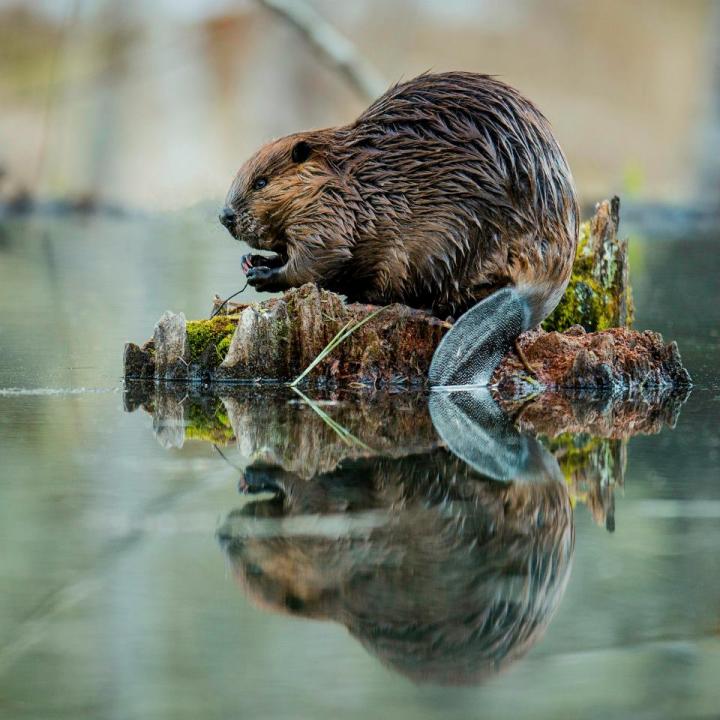In Northern Alberta, pits created by industry activity may support beavers and subsequently wolverines

Credit: A. Colton.
Beavers and wolverines in Northern Alberta are using industry-created borrow pits as homes and feeding grounds, according to a new study by University of Alberta ecologists.
The research examined the relationship between local wildlife and borrow pits, which are industry-created sites where material such as soil, gravel, or sand has been dug up for road construction. The results show that when revegetated the sites provide homes for beavers, which in turn support the survival of wolverines.
“The borrow pits enhance habitats for a number of species of wildlife in the bogs of Northern Alberta,” said Mark Boyce, co-author on the paper, professor in the Department of Biological Sciences, and Alberta Conservation Association Chair in Fisheries and Wildlife.
“The deep water and adjacent forage create excellent habitats for beavers. And wolverines thrive when beavers do. Not only do they prey on beavers, wolverines also have been shown to use beaver lodges as dens where they have their cubs.”
The displacement of wildlife by industrial development is a complex issue, Boyce explains. “In this case, industrial development created the borrow pits that are now used by beavers that actually enhances habitats for our wilderness icon, the wolverine.”
The research was led by PhD student Matthew Scrafford, who formed a partnership with the Dene Tha First Nation that proved instrumental for the study.
“The most important partner on this research was the Dene Tha First Nations,” said Boyce. “Several young people in the area were enthusiastic about the project. They were instrumental in building traps and supporting our research.”
###
This research was funded by the Alberta Conservation Association, the Alberta Trappers Association, and Husky Energy.
The paper, “Beaver (Castor canadensis) use of borrow pits in an industrial landscape in northwestern Alberta,” was published in the Journal of Environmental Management (doi: 10.1016/j.jenvman.2020.110800).
Media Contact
Katie Willis
[email protected]
Original Source
https:/
Related Journal Article
http://dx.




